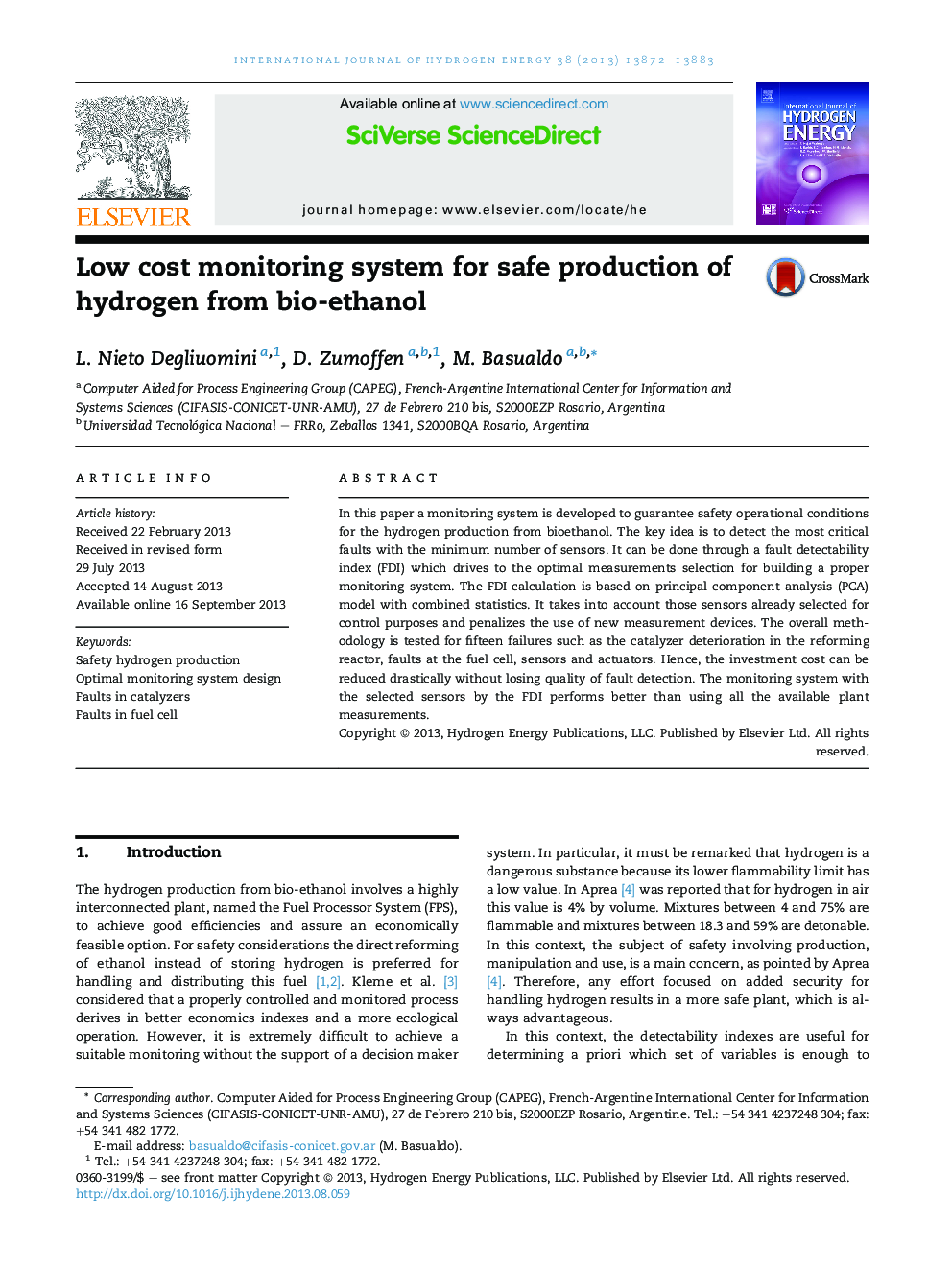| Article ID | Journal | Published Year | Pages | File Type |
|---|---|---|---|---|
| 1273058 | International Journal of Hydrogen Energy | 2013 | 12 Pages |
•The monitoring system is based on the fault detectability index (FDI) using (PCA).•The FDI predicts well the optimal number of measurements to detect critical faults.•Integration between supervision and control guarantee safety conditions at lower cost.•15 types of faults in sensors, actuators, catalyzer and fuel cell are analyzed.•Comparisons with other methodology are discussed.
In this paper a monitoring system is developed to guarantee safety operational conditions for the hydrogen production from bioethanol. The key idea is to detect the most critical faults with the minimum number of sensors. It can be done through a fault detectability index (FDI) which drives to the optimal measurements selection for building a proper monitoring system. The FDI calculation is based on principal component analysis (PCA) model with combined statistics. It takes into account those sensors already selected for control purposes and penalizes the use of new measurement devices. The overall methodology is tested for fifteen failures such as the catalyzer deterioration in the reforming reactor, faults at the fuel cell, sensors and actuators. Hence, the investment cost can be reduced drastically without losing quality of fault detection. The monitoring system with the selected sensors by the FDI performs better than using all the available plant measurements.
